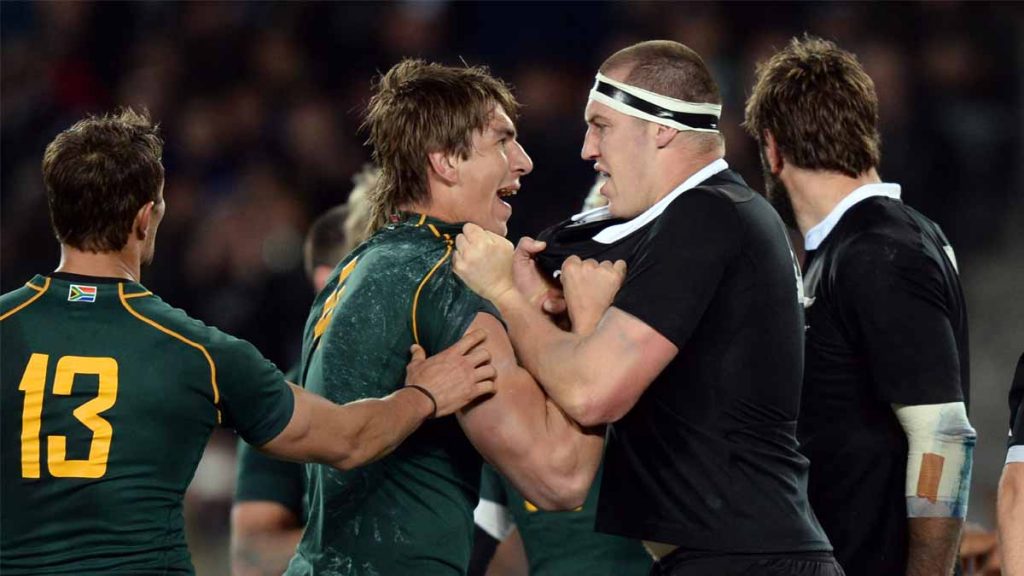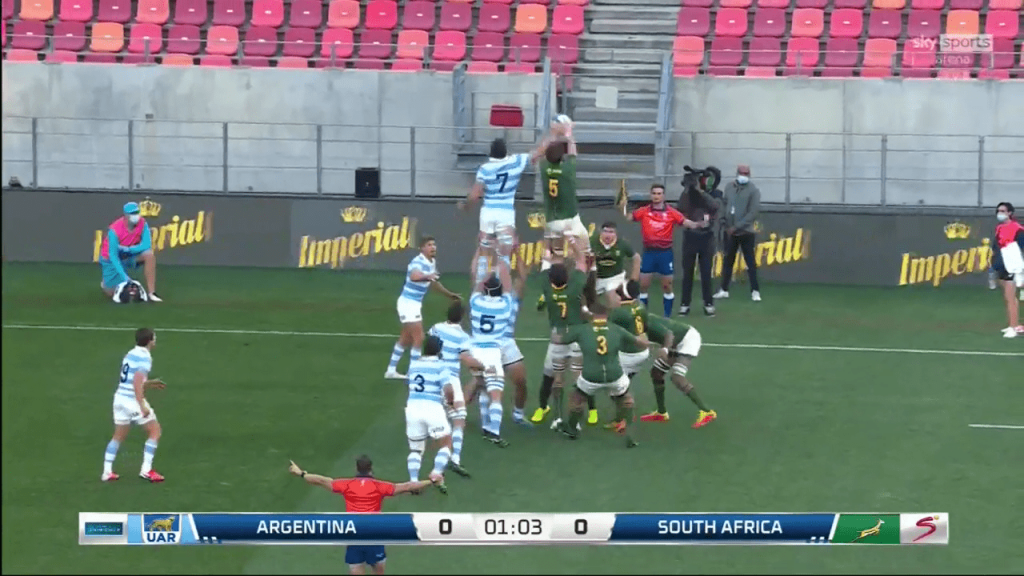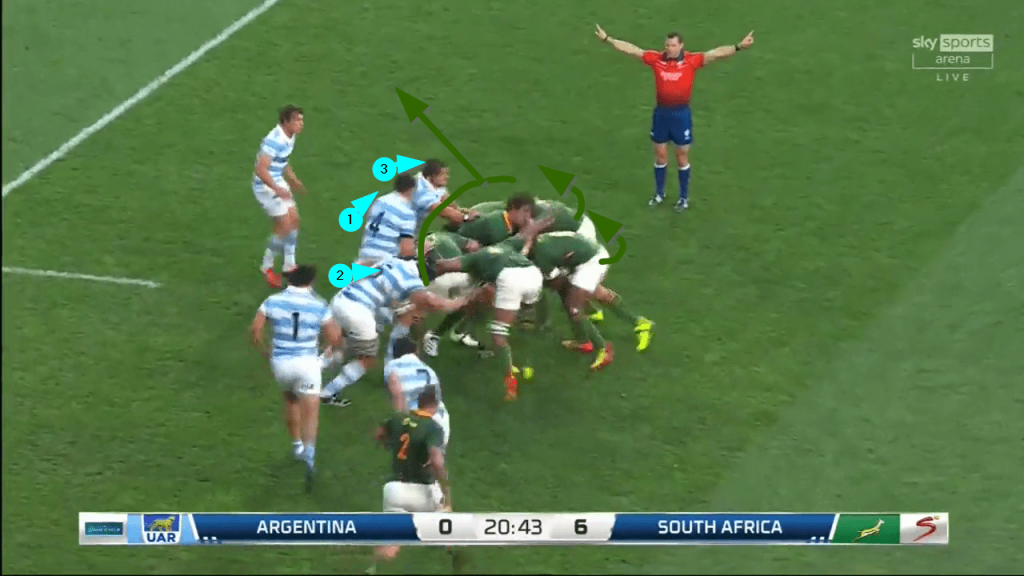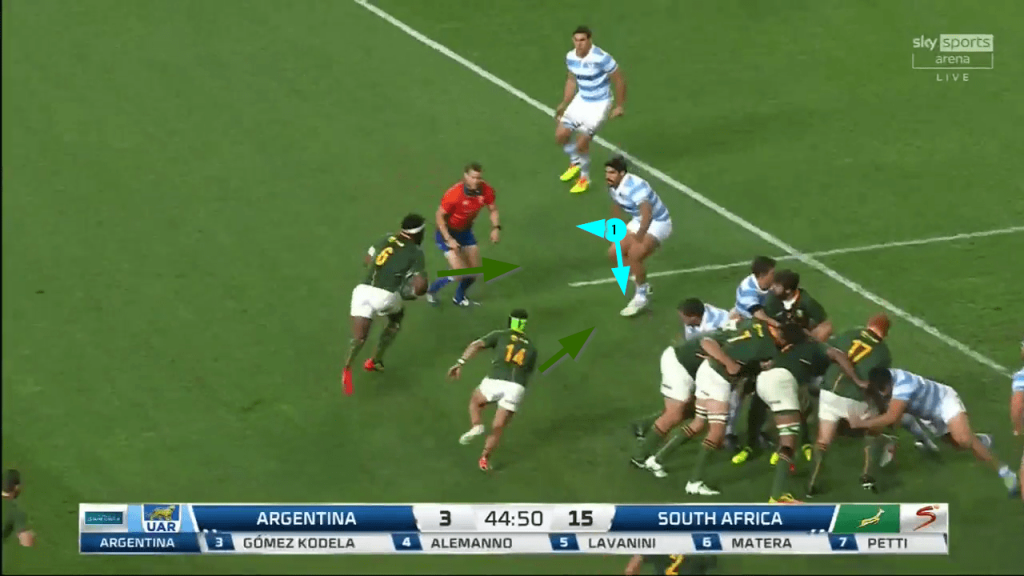For as long as anyone can remember, South Africa’s attack has been based squarely on the drive from the lineout. If there is one item at the top of every opponent’s menu when playing the Springboks, it is finding a reliable method to defend it.
This problem will be occupying the thoughts of New Zealand forwards coach John Plumtree increasingly – and he is a renowned lineout expert who has worked in South Africa with the Sharks franchise. If anyone knows what will come rolling down the road towards the All Blacks on 25 September and 2 October, it’s ‘Plum’.
Argentina were the latest to try – and fail – in the second round of the Rugby Championship at Nelson Mandela Bay stadium in Port Elizabeth. In the course of the game, South Africa forced six penalties, one yellow card, two clean breaks and scored two tries directly from lineout drive starters. Although Argentina did force four lineout turnovers, the account sheet favoured the Boks heavily in the final reckoning.

Argentina’s coaches would have analysed South Africa’s series versus the British & Irish Lions in their preparation for the game. During that series, the Springbok primarily targetted the front (52 per cent) and middle of the lineout (41 per cent), with just a handful of balls delivered to the back (7 per cent).
The vast majority of those lineouts were either five or six-man formations.
The Pumas coaching staff decided to replace a back-rower, Facundo Isa, with giant second row Tomas Lavanini, and they moved their main lineout poacher, Guido Petti, to the flank at Port Elizabeth.
Their idea was to have Petti contest the throw at the front/middle, and compete in the air rather than on the ground:
In the first of these examples, the contest at the front prevents the catch being made at the front, and the maul forming around Eben Etzebeth:

South Africa are clearly set up for the drive, but the contest in the air by Petti (number 7) stops the drive at source.
In the second, Pumas number 4, Matthias Alemanno, is playing the Petti role and forces a mistake in timing between the thrower (Bongi Mbonambi) and the receiver (Franco Mostert). The third instance illustrates a late shift in position to the front by Petti causing another disconnect further up the line between Mbonambi and Mostert.
The Pumas certainly succeeded in their aim of stopping easy ball to the front and middle, and pushing the Springbok throwers to make longer deliveries. Over the course of the two-game series between Argentina and South Africa, 20 of the 25 Springbok throws went to the middle or tail of the lineout, with four overthrows resulting in turnover.
But the policy does not come without risk, and in the second match risk clearly outweighed reward. The first hint of the problems to come arrived as early as the 7th minute of the game:

Petti has gone up at the front and Alemanno has attempted to apply further pressure to the throw to Lood de Jager at the tail. Once the catch is successfully made by De Jager, South Africa hold all of the trump cards. The main defender (Alemanno) has his back turned to a drive which is already set, and has to swim up the side of the maul to influence the play. The result? Penalty to South Africa.
It became a repeated theme:
Once South Africa make the receipt at the back, it means 10-15 metres automatic progress because none of the Argentinian defenders are in a position to engage, let alone penetrate the blocking front as the maul forms:

Both Alemanno and Petti are marginalized and the infield corner of the drive is open, so that the Springboks can shift the drive towards the posts.
In a recent Aotearoa Rugby Pod episode, Blues hooker James Parsons highlighted the significance:
“They normally win the ball middle-back, which is half the battle, and if they can do that, they can almost start heading towards the goalpost in a sense. That’s what they did, because all that pressure coming from the Argentine forwards is almost coming from the side and pushing them towards that corner…
“The Springboks are patient, they win the ball in great areas, and then once they set, they work together almost like a scrum. They work together as eight. They’ve all got a role to play and they’re all prepared to play that role, and they feel it. They’re so good at feeling where that pressure is coming from to use that to their advantage rather than fight against it.”
South Africa found more than one way to work the infield corner as the game developed:
The throw goes beyond Petti at the front and Argentina’s forwards find themselves overworked on the infield corner, leaving Siya Kolisi and Cheslin Kolbe with an easy two-on-one in that area:

The coup de grâce came seven minutes later:
By now the formula for success is a familiar one. Throw beyond Guido Petti’s range at the front, apply pressure at the infield corner – enough to force the defence to over-compensate – then drive straight through the middle against negligible resistance. The words of James Parsons are worth repeating: “They’re so good at feeling where that pressure is coming from, to use that to their advantage rather than fight against it.”
Parsons went on to suggest that the best option for the All Blacks would be to try to sack the receiver immediately:
“The one thing about the back ball, if you’re good at sacking, it’s probably best to sack it, because you’re not going to be able to get the numbers around and come from the angle you want because all your numbers are stacked to that front-middle because you’re trying to defend the lineout first and foremost.
“Kieran Read did it extremely well in the pool game against the Springboks in 2019. He pretty much just killed it dead, and it forces them to play off static ball, or kick off static ball, so they’re not kicking on their terms.
“A sack play would work around that middle-back. It’s a little bit defeatist in the sense that you’re not getting up to challenge the ball, but they [the Springboks] are pretty effective.”
The sack is not the only option if the defence chooses to stay on the ground, rather than compete in the air:
In this example, Petti and Alemanno both choose to stay on the deck and are therefore ready to fill the gaps in the blocking wall:

They stay in their lanes and draw the ‘one stop’ call from the referee early, with South Africa unable to focus the drive on the receiver (De Jager) and make any further progress around the infield corner:

All Blacks forwards coach John Plumtree will be thinking long and hard about how best to offset the strength of the Springbok lineout drive over the coming weeks. He will be sorely tempted to give his veteran, blue-chip second rows every chance to compete in the air and stop the drive at the source.
He will be taking his coaching life in his hands if he takes that fork in the road. Great as Brodie Retallick and Sam Whitelock have been at poaching the opposition throw in their long careers at the top level, the dangers of an undermanned defence against the drive were amply underlined in the second round of the Rugby Championship.
Although the Springbok throwers have shown some frailty when required to hit the mid/tail of the line consistently, South Africa can be lethal when you allow them to build up a head of steam and trundle unopposed towards the posts. And this time around, the comforting, avuncular figure of Kieran Read won’t be there to do the sorting and make the sack.


Comments
Join free and tell us what you really think!
Sign up for free